- Program
- Program
- Schedule
- Business, Leadership & Organization
- Cloud Platforms & Infrastructure
- DevSecOps
- Kubernetes & Cloud Native
- CI/CD: Automation & Delivery
- System Design & Software Architecture
- Observability & Reliability
- DevOps Transformation Day
- Platform Engineering Summit
- Kubernetes Bootcamp
- Advanced Kubernetes Bootcamp
- DevSecOps Days
- Speakers
- More Program
- Program
- Program
- Call For Papers
- Program
- Program
- Program
- Tickets
- Tickets
- Tickets
- Tickets
- Tickets
- Tickets
- Tickets
- Program
- Formate
- Inhouse
- Blog
- Info
- DevOpsCon
- Downloads
- Sponsors & Expo
- Sponsors & Expo
- Info
- Camps
- Editions
- Jetzt anmelden
- Register Now
- Register Now
- Register now
- Register Now
- Register now
- Register now
- Register Now
DevOpsCon December 2016
Here you can find the program from the DevOpsCon in June 2017. Our current program you can find here.
09:30 - 17:30
Cuvillies I


Der Docker-Basis-Workshop >> FULLY BOOKED!
Das Thema Docker sorgt gerade für viel Aufsehen. Ob kleine Start-ups oder große Firmen – schon aufregend viele Unternehmen setzen auf die Open-Source-Technologie Docker. Aber was hat es mit dieser Art von Containern auf sich, die den Virtualisierungsmarkt aufrollen und die Softwareentwicklung nachhaltig verändern wollen? Docker verspricht einen schnellen Start, flexible Konfiguration und stabile Images für Entwicklung und Produktion. In diesem Workshop wollen wir diesen Versprechen praktisch nachgehen. Wir starten mit einem Überblick und stellen die ersten Schritte beim Einsatz von Docker vor. Die Teilnehmer lernen die wichtigsten Befehle, Anweisungen und Konzepte praktisch kennen. Anhand eines ausführlichen Beispiels zeigen wir, wie ein Microservice mit Java implementiert, mit Docker installiert und in einer Umgebung mit anderen Services integriert wird. Außerdem diskutieren wir das aktuelle Docker-Ökosystem und klären über Chancen und Risiken auf.
Niclas Mietz bee42 solutions gmbh
Niclas Mietz ist DevOps-Engineer mit Leidenschaft in der bee42 solutions gmbh und studiert Informatik an der FH in Dortmund. Er beschäftigt sich gerne mit Open-Source-Projekten des Docker-Ökosystems und liebt es, Automatisierung voranzutreiben. Zudem ist Er auch Co-Organisator des Docker Bochum Meetups.
Peter Roßbach bee42 solutions gmbh
Peter Roßbach ist freiberuflicher Systemarchitekt und Coach zahlreicher Webanwendungen. Sein besonderes Interesse gilt der Entwicklung von komplexen Informationssystemen, einschließlich der Gestaltung und Realisierung von testgetriebenen Prozessen. Seit 1997 ist Peter Roßbach im Bereich HTTP-Server und Webcontainer tätig. Er ist Committer im Apache-Tomcat-Projekt und Mitglied der Apache Software Foundation. Sein besonderes Interesse gilt der Gestaltung von Provisionierungs-, Überwachungs- und Analysesystemen für komplexe Infrastrukturen. Mit der bee42 solutions gmbh realisiert er entsprechende Infrastrukturprodukte und Dienstleitungen auf Basis des Docker-Ökosystems, aktueller Webtechnologien, NoSQL-Datenbanken und Cloud-Plattformen.
09:30 - 17:30
Effner
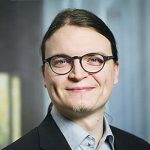


Service-Discovery in einer Microservices-Infrastruktur
Microservices etablieren sich als Architekturstil zur Entwicklung komplexer Softwaresysteme. Wenn eine Anwendung auf Basis von Microservices konzipiert wird, stellt sich die Frage, wie sie skalierbar und robust bereitgestellt werden kann. Im Rahmen des Power Workshops wird eine exemplarische Microservices-Architektur aufgebaut und anhand dieser gezeigt, wie die Dienste mittels Service-Discovery adäquat bereitgestellt werden können. Der Power Workshop erfolgt in Anlehnung an das Konzept des Mob Programmings. Es wird eine Zielanwendung vorgegeben; die Realisierung erfolgt im Rahmen des Workshops, dabei können sich die Teilnehmer aktiv einbringen und Vorschläge zur Realisierung beitragen. Neben Quellcode werden auch Technologien zur Bereitstellung demonstriert.
Clemens Heppner WPS – Workplace Solutions
Clemens Heppner studierte Informatik in Hamburg und Cambridge/UK, um seiner zweiten Leidenschaft, der musikalischen Signalverarbeitung nachzugehen. Seit 2011 kümmert er sich wieder um sein Hauptthema, agile Softwareentwicklungsprozesse und DevOps.
Florian von Stosch WPS – Workplace Solutions
Florian von Stosch ist Softwareentwickler und Berater bei WPS – Workplace Solutions. Vorher hat er an der Uni Hamburg Informatik im Master studiert. Er interessiert sich für IT-Infrastruktur, DevOps, Machine Learning und Softwarearchitektur.
Johannes Bumüller WPS – Workplace Solutions
Johannes Bumüller hat an der Universität Hamburg Wirtschaftsinformatik studiert. Viele Jahre war er als Technischer Berater für ein italienisches Softwarehaus tätig. Dort entwickelte und integrierte er Softwaresysteme für Versicherungsunternehmen. Seit 2015 arbeitet Johannes als Softwareentwickler bei der WPS. Neben den Programmiersprachen C# und Java gilt sein besonderes Interesse den Themen Softwarearchitektur und agiler Softwareentwicklung.
09:30 - 17:30
Cuvillies II

Organization Design for effective Software Systems
For effective Cloud-connected software systems we need to organize our teams in certain ways. Taking account of Conway’s Law, we look to match the team structures to the required software architecture, enabling or restricting communication and collaboration for the best outcomes. In this workshop you will learn how to design your organization for modern, Cloud-connected software systems, covering topics such as: fundamental team topology types; how and when to use the fundamental team topologies; how to recognise other team topologies and to map these onto the fundamental types using topology fitness functions; the dynamics of team design and how team topologies should evolve; heuristics for discovering new topologies. On completion of the workshop, you should have a sound understanding of which team topologies to apply in different circumstances and why. Attendees are expected to have a basic understanding of Conway’s Law and of the DevOps Topologies patterns at http://devopstopologies.com/.
Matthew Skelton Skelton Thatcher Consulting
Matthew Skelton has been building, deploying, and operating commercial software systems since 1998. Co-founder and Principal Consultant at Skelton Thatcher Consulting (http://skeltonthatcher.com/), he specialises in helping organisations to adopt and sustain good practices for building and operating software systems: Continuous Delivery, DevOps, aspects of ITIL, and software operability. Matthew curates the well-known DevOps team topologies patterns at http://devopstopologies.com/ and is co-author of the books Database Lifecycle Management (Redgate) and Continuous Delivery with Windows and .NET (O’Reilly). He has qualifications in Cybernetics, Neuroscience, and Music, and is a Chartered Engineer (CEng).
09:30 - 17:30
Asam

Building a modern CI/CD Pipeline – a hands-on Workshop >> FULLY BOOKED!
The purpose of this workshop is to explore the core concepts of modern Continuous Delivery (CD). The participants will learn why CD is needed, what are the necessary (and the optional) parts of a great CD pipeline and how to wire them all together for an effective workflow. In the process we will get our hands dirty building and deploying a number of interconnected microservices onto a cloud-based cluster. The workshop is for Software Developers, Testers, Sys Admins and DevOps Engineers looking to expand their knowledge in CI/CD, obtain a system-wide view of software delivery processes and enrich their experience by playing with the industry hottest tools. The requirements for the workshop are a professional background in working with computer systems, basic knowledge in Unix/Linux OS, scripting languages (Perl, Python, Ruby, JavaScript or Shell) and software build systems (desirable). For the purpose of the workshop the participants will be requested to acquire a trial account for Google Cloud Platform. These accounts are free of charge but may require providing credit card details.
Anton Weiss Otomato
Anton (Ant) Weiss is the founder, principal consultant and CEO at Otomato – the effective software delivery company. Anton has been building and delivering software for the last fifteen years both at large enterprise companies (AT&T, BMC) and startups. A big fan of technical training and knowledge sharing, Anton was one of the initiators and instructors of the first DevOps certification course in Israel. Anton is a seasoned engineer, but he also holds a BA in Sociology and an MBA, which makes him very keen on exploring the social aspects of collaborative software development. He is a frequent speaker at technology events and a rock star – Ant loves the stage and makes sure his audience stays both entertained and enriched. Firm believer in continuous improvement and organisational transparency.
09:00 - 09:30
Cuvillies

Reception and Opening
Sebastian Meyen will welcome you at the DevOps Conference.
Sebastian Meyen Software & Support Media GmbH
Sebastian Meyen is Chief Content Officer at S&S Media. He has been actively involved with the IT industry for more than ten years. As a journalist he is constantly in touch with thought leaders in software development and architecture. He is editor in chief of the German speaking Java Magazin and program chair of the JAX conferences since 2001. Prior to joining S&S Media, he studied philosophy and anthropology in Frankfurt, Germany.
09:30 - 10:00
Cuvillies

Overcoming Obstacles to DevOps
All organizations that did not originate this moment have a pre-existing culture as well as legacy technology and processes that can be more or less amenable to DevOps implementation. That organizational culture is influenced by the personalities and management styles of Executive Management, the wider culture in which the organization is situated, and the personalities of key team members at all levels of the organization. The technology in use, and more importantly, existing processes governing its deployment and development, may need to be modified or even replaced completely, and existing stakeholders with entrenched interests can throw a wrench in the works. There are several key techniques that an agent of change can implement to smooth the transition and overcome these obstacle on the way to a smoother DevOps deployment process with the re-aligned silos that are characteristic of a healthy DevOps culture.
Greg Bledsoe Accenture
Greg Bledsoe is a managing consultant at Accenture in the DevOps architecture practice and regularly advises and leads the implementation of DevOps principles and practices at the fortune 100. He is also a regularly published author. Greg has spent a career being responsible for keeping platforms secure and reliable. He brings twenty years of experience building scalable, secure and cost effective environments. Greg is a certified ethical hacker and certified penetration tester, and led a talented team with the same certifications at Personal, Inc. Greg has tackled large scaling challenges such as managing the explosive growth of third party credit card processor TSYS from a few million accounts to hundreds of millions, including an extranet securely connecting hundreds of partners, clients, and vendors.
10:15 - 11:15
Asam II

Docker-Orchestration leicht gemacht
Diese Session gibt einen Überblick über die technischen Lösungen für die Orchestrierung von containerbasierten Microservices. Erzeugen, Betreiben und Ändern von vielen Maschinen und Containern auf dem eigenen Notebook, im Data Center oder in der Cloud ist eine Herausforderung. Unsere Produkte werden ständig erweitert und an verschiedene Nutzungen angepasst. Um Microservices zu entwickeln, bedarf es einer guten Koordination von Gruppen von Prozessen und ihren Abhängigkeiten. Das Docker-Ökosystem bietet seit der Version 1.12 eine komplette Orchestrationslösung mit vielversprechenden Werkzeugen zur automatischen Skalierung, Fehlerbehebung und Deployment. Die Session stellt den praktischen Nutzen der Docker-Plattform vor und demonstriert den praktischen Umgang damit.
Peter Roßbach bee42 solutions gmbh
Peter Roßbach ist freiberuflicher Systemarchitekt und Coach zahlreicher Webanwendungen. Sein besonderes Interesse gilt der Entwicklung von komplexen Informationssystemen, einschließlich der Gestaltung und Realisierung von testgetriebenen Prozessen. Seit 1997 ist Peter Roßbach im Bereich HTTP-Server und Webcontainer tätig. Er ist Committer im Apache-Tomcat-Projekt und Mitglied der Apache Software Foundation. Sein besonderes Interesse gilt der Gestaltung von Provisionierungs-, Überwachungs- und Analysesystemen für komplexe Infrastrukturen. Mit der bee42 solutions gmbh realisiert er entsprechende Infrastrukturprodukte und Dienstleitungen auf Basis des Docker-Ökosystems, aktueller Webtechnologien, NoSQL-Datenbanken und Cloud-Plattformen.
10:15 - 11:15
Cuvillies

How and why to design your Teams for modern Software Systems
For effective, modern, Cloud-connected software systems we need to organize our teams in certain ways. Taking account of Conway’s Law, we look to match the team structures to the required software architecture, enabling or restricting communication and collaboration for the best outcomes. This talk will cover the basics of organization design, exploring a selection of key team topologies and how and when to use them in order to make the development and operation of your software systems as effective as possible. The talk is based on experience helping companies around the world with the design of their teams.
Matthew Skelton Skelton Thatcher Consulting
Matthew Skelton has been building, deploying, and operating commercial software systems since 1998. Co-founder and Principal Consultant at Skelton Thatcher Consulting (http://skeltonthatcher.com/), he specialises in helping organisations to adopt and sustain good practices for building and operating software systems: Continuous Delivery, DevOps, aspects of ITIL, and software operability. Matthew curates the well-known DevOps team topologies patterns at http://devopstopologies.com/ and is co-author of the books Database Lifecycle Management (Redgate) and Continuous Delivery with Windows and .NET (O’Reilly). He has qualifications in Cybernetics, Neuroscience, and Music, and is a Chartered Engineer (CEng).
10:15 - 11:15
Effner
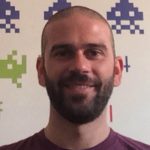
Prometheus is good for your small Start-up
In this talk we'll explain our journey from having near-zero monitoring to having all of our infrastructure monitored with the necessary metrics and alerts. We will share with the audience some of the mistakes we did and what lessons we have learned. We currently have around 200 instances monitored with a comfortable cost-effective in-house monitoring stack based on Prometheus. We want to demonstrate that you don't need to have a big fleet to embrace Prometheus and that it is a non-expensive solution for monitoring."
Ignacio Carretero ShuttleCloud
Ignacio P. Carretero is Software Engineer at ShuttleCloud. ShuttleCloud is the most scalable email and contacts data import system. It helps some of the leading email and address book providers, including Google and Comcast, increase user growth and engagement by automating the switching experience through data import.
12:00 - 13:00
Effner

The Road to Continuous Deployment: a Case Study
It’s a situation many of us are familiar with: a large legacy application, limited or no tests, slow and manual release process, low velocity, no confidence ... Oh, and management wants new features, fast. But how to proceed? Using examples and lessons learned from a real-world case, I’ll show you how to strangle the legacy application with a modern service architecture and build a continuous deployment pipeline to deliver value from the first sprint. On the way, we take a look at testing strategies and various (possibly controversial!) tips and best practices.
Michiel Rook make.io
Michiel Rook is a freelance Java/PHP/Scala contractor from the Netherlands and holds a Master’s degree in computer science. He loves coaching teams on the road to continuous deployment and developing better software. He is an Army reservist and enjoys music, cars, sports and movies.
12:00 - 13:00
Asam II

Docker Container Loading
“docker build” with plain Dockerfiles is currently the canonical and recommended approach for creating Docker images. But is this also always the best way for all use cases? This talk presents alternative and creative ways to produce Docker images. You will meet dedicated template systems like fish-pepper which adds composability and parameterisation in addition to the Dockerfile intrinsic extension mechanism. In another recipe you will learn how to reproducibly create Docker images with Ansible. The image fabrication can be directly integrated into your Maven based builds, too. This and more will be explained and demonstrated with live demos. At the end you will have a good overview what is out there for loading
your Docker containers in addition to a vanilla “docker build”.
Dr. Roland Huß Red Hat
Roland Huß is a Principal Software Engineer at Red Hat working on fabric8. He has been developing in Java for nineteen years now but never forgot his roots as system administrator.
Roland is an active open source contributor, lead developer of the
JMX-HTTP bridge Jolokia and the popular fabric8io/docker-maven-plugin. And he loves chilli pepper.
12:00 - 13:00
Asam I

New working Worlds at SoundCloud
How can you design space to improve innovation and collaboration? How can you meet never-ending and ever-changing employee needs with limited budgets? How can you create flexibility through change? Join SoundCloud Director of Workplace Emily Lannon as she answers these questions and more with what she’s learned throughout her career, but especially during the last four years of growth at SoundCloud, one of Europe’s tech success stories. Learn how SoundCloud’s Space/Real Estate strategy has evolved throughout eleven office moves, three major builds and the operationalization of four offices around the world. Find out what has worked, what hasn’t, and how to apply simple principles to achieve real impact with your organization’s spaces.
Emily Lannon SoundCloud
Emily Lannon is Director of Workplace at SoundCloud. She is responsible for property sourcing, design, buildout, office programming and employee experience for some 300+ employees in 4 offices and 3 satellite locations worldwide. She specialises in Real Estate strategy for long term growth and cost optimization as well as designing for employee experience and enhanced productivity.
12:00 - 13:00
Cuvillies

Build, ship, run, disaster! It's all about Monitoring and Dependencies in distributed Microservices Environments
Faster releases, high availability and scalability are promised by people advocating micro services running in containers or PaaS. Based on observations we made from real-world environments micro service architectures tend to results in up to twenty times larger environments than their monolithic counterparts! While the complexity of deployments, versioning and dependencies grows with every additional service, tracking health, proper functioning, and performance becomes harder. In this presentation you learn about the new challenges and effects of building, shipping and running micro service environments on top of container-based PaaS infrastructure (like Cloud Foundry and Docker) and how this impacts performance and monitoring.
Martin Gutenbrunner Dynatrace
Martin Gutenbrunner is Tech Lead for Microservices and Azure in the Dynatrace Innovation Lab. Before joining Dynatrace, he worked as a lead software developer and architect – mainly on Java web applications – for about a decade. While he’s passionate about software architecture on his job, he loves spending time with family and friends, tinkering with his house, running and binge watching.
14:15 - 14:45
Cuvillies

How we collaborate at GitHub
Learn how GitHub's globally distributed teams use GitHub tooling to develop GitHub, collaborate with engineering, sales, marketing, services and legal and deploy more than 500 times a week. Experience ChatOps, a great way to reduce friction between development and operations and super efficient way to bring new engineers up to speed. See life examples on how to use Hubot to retrieve log files, graph various metrics and deploy pull requests directly from Slack to Heroku. Get some ideas how to build such a ChatOps environment yourself.
Marko Berkovic GitHub
Passionate about the power of software, how it is improving our lives, and transforming every single industry on the planet. At GitHub Marko is helping large businesses in Europe transform how they deliver better software, keep their developers happy, attract talent, and reuse code by adapting GitHub. Marko has over ten years of Experience in the IT industry, and lives in Vienna.
15:00 - 16:00
Effner

Hands-on Docker Cluster mit Swarm(Kit)
In diesem Hands-on wird gezeigt, dass das Hands-on vom Juni (in dem wir Docker Swarm/Registrator/Consul behandelten) schon nicht mehr State of the Art ist. Docker liefert seit 1.12 eigene Health-Checks mit. Docker Swarm (jetzt) aka SwarmKit ist Bestandteil von Docker geworden.
Mit SwarmKit liefert Docker eine Cluster-Lösung, welche sich anschickt, es mit Kubernetes aufzunehmen und dabei viel leichter aufzusetzen ist. Im Hands-on setzen wir einen „Docker-Cluster“ (SwarmKit) auf und betreiben einige Services. Wie immer bei meinen Hands-ons verbringen wir die meiste Zeit auf dem Terminal. P. S.: Selbstredend werden im Hands-on die aktuellste Version und die neuesten Entwicklungen zum Zeitpunkt des Vortrags behandelt.
Erkan Yanar Freelancer
Erkan Yanar beschäftigt sich seit dem letzten Jahrtausend mit Linux. Er ist freiberuflicher Consultant mit den Schwerpunkten MySQL, Containervirtualisierung, DevOps und OpenStack. Wenn er nicht bei einem Kunden ist, veröffentlicht er in Fachzeitschriften oder hält Vorträge auf Konferenzen.
15:00 - 16:00
Asam II
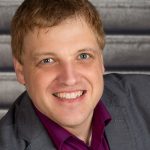
Zwölf Faktoren zum Herrschen über die Cloud
Die „12 Factor App“ (http://12factor.net/) ist eine Sammlung von zwölf recht technischen Richtlinien, die zu einem guten Cloud-fähigen Design einer Anwendung führen. Im Kern soll jedes der zwölf Prinzipien zusätzliche Cloud-Mechanismen ermöglichen, wie z. B. bedarfsgerechte Skalierung oder schnelleres Deployment. Diese Session versucht, die technischen Details vom Geschäftsnutzen her plausibel zu machen. Die neue Perspektive ermöglicht eine Anwendung der Prinzipien z. B. zur Bewertung des Cloud-Nutzens bei der Modernisierung von Altanwendungen.
Bernd Rederlechner T-Systems International
Bernd Rederlechner arbeitet als leitender T-Systems-Cloud-Architekt. Vom kleinen Innovationsprojekt bis hin zum strategischen Großprojekt (wie z. B. De-Mail) hat er die Architektur vieler Kundenvorhaben bis zum produktiven Einsatz verantwortet. Diese Erfahrung gepaart mit modernen Ideen wie „Lean Startup“ nutzt er jetzt, um Cloud-Kunden Wege zur effizienten Umsetzung ihrer digitalen Geschäftsideen zu zeigen.
15:00 - 16:00
Cuvillies

The Role of Leadership in DevOps
When we talk about DevOps we first think about deploying applications, then we remind ourselves it’s about collaboration. Then we preach culture and empathy and then we go and write a new automation tool. Still by now everybody understands that to improve the way we work much more is needed than a few cool tools. A true transformation requires a mind shift and for that – leadership is a must. Every DevOps handbook talks about how devs and ops should play together nicely but little has been said about how leadership can enable that. How do you take hostility and convert it to empathy. How do you help engineers to become inspired and motivated to learn, share and support? In this talk I’ll provide an overview of leadership theories and the guidelines for applying them in the context of DevOps.
Anton Weiss Otomato
Anton (Ant) Weiss is the founder, principal consultant and CEO at Otomato – the effective software delivery company. Anton has been building and delivering software for the last fifteen years both at large enterprise companies (AT&T, BMC) and startups. A big fan of technical training and knowledge sharing, Anton was one of the initiators and instructors of the first DevOps certification course in Israel. Anton is a seasoned engineer, but he also holds a BA in Sociology and an MBA, which makes him very keen on exploring the social aspects of collaborative software development. He is a frequent speaker at technology events and a rock star – Ant loves the stage and makes sure his audience stays both entertained and enriched. Firm believer in continuous improvement and organisational transparency.
15:00 - 16:00
Asam I

Playing Port Authority – TDD for Containers
The port authority, in every harbor, is responsible for inspecting the cargo, and therefore containers, that go in and out of it. Wouldn’t you want to do this with your containers as well? I want to talk about unit-, functional- and integration testing when developing container based infrastructure, using ServerSpec, Ruby and docker-compose intertwined with Continuous Delivery. I will include a live coding example as well as a step by step introductions and ready-to-use sample code to get your hands dirty with.
Moritz Heiber ThoughtWorks
Moritz Heiber works as a DevOps Birth Assistant with ThoughtWorks, a shepherd for clients and their hardware and software projects, consulting on infrastructural and operational challenges in distributed computing environments using the power and the values behind the idea of DevOps with the help of focused collaboration, cross-functional teams and pair programming. He loves building things on Linux, especially in clouds, likes reliable infrastructure as code, descriptive provisioning tools and statically typed programming languages and he sees it as his destiny to help people achieve serenity through using DevOps. His purpose in life seems to be trying to outsmart computers. He’s really bad at it most of the time.
16:45 - 17:45
Effner

Correlations between DevOps and Holacracy
Holacracy and DevOps share a number of desired outcomes and in this talk Helen will explore these in detail – from how to organise teams, distribute authority and promote autonomy, amplify feedback loops and process tensions, continually fund and build a platform for evolution. If you are unfamiliar with the concept of Holacracy this is a great introduction to the subject – Helen will cover where it’s come from, who’s doing it today and how it can be used in a devops transformation to drive cultural change.
Helen Beal Ranger4
Helen Beal has twenty years’ experience working in the technology industry with a focus on the Software Development Lifecycle for a wealth of cross industry clients in the UK and abroad. Helen is passionate about DevOps and is the creator of the Ranger4 DevOps LiftOff Workshop and the Ranger4 DevOps Maturity Assessment – winner of the IBM Beacon Award 2015 for Outstanding DevOps Solution. She also started Ranger4’s #DevOpsFriday5 initiative and is on the Board of Regents at the DevOps Institute (Ranger4 are also a Registered Education Provider for the DOI’s DevOps training courses). Helen is also a novelist and ecologist. She once saw a flamingo lay an egg.
16:45 - 17:45
Asam I
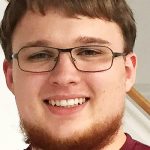

AWS Lambda meets Continuous Delivery
Ein großer Vorteil von AWS Lambda gegenüber anderen Serverless-Diensten ist die gute Integration in die bestehenden AWS-Dienste. So kann beispielsweise auf eingehende E-Mails über den Simple Notification Service (SNS) ebenso reagiert werden, wie auf neu hochgeladene Dateien in S3. Um davon profitieren zu können, müssen Lambda-Funktionen entsprechend konfiguriert werden. Bei Applikationen jenseits der üblichen Beispiele wird dies schnell sehr komplex und fehleranfällig, umso mehr, wenn die Lambda-Funktionen mit AWS API Gateway über HTTP angesprochen werden. Im Vortrag wird am Beispiel einer Single-Page-Applikation gezeigt, wie man in einem Serverless Backend von unterschiedlichen AWS-Diensten profitieren kann und dabei die Konfiguration der unterschiedlichen Lambda-Funktionen und von AWS API Gateway im Griff behält. Mithilfe von CloudFormation, Apex, Serverless oder Terraform kann all das automatisiert und in einen CI-/CD-Prozess integriert werden. Der Vortrag gibt einen Überblick über die unterschiedlichen Möglichkeiten und zeigt konkrete Lösungen.
Andreas Mohrhard cosee GmbH
Andreas Mohrhard ist Softwareentwickler bei cosee. Dort beschäftigt er sich mit Cloud-Technologien, vor allem im Bereich Amazon Web Services.
Alex Krause cosee GmbH
Alex Krause ist passionierter Cloud Developer bei cosee. Er begeistert sich für reaktive Programmierung und entwickelt Cloud Native Microservices für die Amazon Cloud.
16:45 - 17:45
Cuvillies
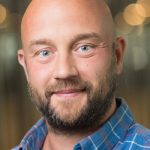
Why you´re not ready for Containers in Production!
The IT industry continues to move fast, with a shift towards technologies like containers, orchestration and microservices at the top of the agenda. Businesses know that to remain competitive, and prove economic value, they need to have a stake in this new technology landscape. There´s always an urgency to move to the latest, greatest thing, but it's almost impossible to do this, problem free, from day one. This session will cover a migration path from the workloads we recognise today to the flexible IT of the future.
Christian Johannsen Chef
Christian Johannsen is a Solutions Architect at Chef, covering the DACH region. Christian was an integration and automation specialist in the virtualisation space and wanted to get more involved with the DevOps scene. His experience in these specialisms are what now allow him to help customers integrate the Chef framework into new and existing environments. His work across many customers provides him with a good perspective on both the technical and cultural aspects of implementing DevOps solutions.
16:45 - 17:45
Asam II

Agiles Service Monitoring mit Prometheus (for Fun and Profit)
Im #Neuland gibt es noch heute stark in die Jahre gekommene Host- und Service-Monitoring-Lösungen, die zu den unliebsamen Langzeitbaustellen vieler Teams und Unternehmen gehören. Wer kennt es nicht, dass regelmäßige „False-Positive“-Alarme sich in Form von E-Mails oder SMS lästig bekannt machen, dass Webinterfaces schnell an ihre Grenzen stoßen, dass komplexe und benutzerfreundliche Graphen generiert werden sollen oder dass das Monitoring-Konstrukt nicht mit der großen Zahl an hippen neuen Docker-basierten Services/Checks zurechtkommt. Ganz zu schweigen von den lückenhaften oder fehlenden Programmierschnittstellen vieler Monitoring-Monolithen. In diesem Vortrag möchten wir euch eine auf Prometheus und Kubernetes basierende Musterlösung vorstellen, die eine Webapplikation über verschiedene Metriken hinweg überwacht und das DevOps-Betriebsteam zum richtigen Zeitpunkt auf konkrete Probleme aufmerksam macht. Das komplette Set-up kann online begutachtet werden. Verwendete Configs werden zum Nachbau ebenfalls bereitgestellt.
Christoph Petrausch inovex GmbH
Christoph Petrausch beschäftigt sich als Linux System Engineer unter anderem mit dem Monitoring und Logmanagment von großen Umgebungen. Dabei hat er verschiedene Monitoringlösungen kennengelernt und eingesetzt. Mit dem Prometheus Stack hat er seinem Team einen Einblick in die gemischte Infrastruktur aus Bare-Metal, Cloud und Kubernetes geschaffen. Dabei hat er auch einige Prometheus Exporter selber geschrieben.
18:15 - 19:15
Asam II

Ansible für Entwickler
Das automatisierte Konfiguieren von Servern ist dank Orchestrierungswerkzeugen wie Puppet und Chef heute kein Problem mehr. Doch eignen sich diese Werkzeuge wenig für die regelmäßige Softwareverteilung von typischen Java-Artefakten wie WAR-Dateien. Ansible hat dieses Problem erkannt. Es ist ein Werkzeug, das Lösungen für das Konfigurationsmanagement und für die Softwareverteilung aus einer Hand liefert.
Dieser Vortrag gibt eine kurze Einführung in Ansible und zeigt, wie sich Ansible von anderen Orchestrierungswerkzeugen unterscheidet. Zusätzlich wird darauf eingegangen, warum Ansible vor allem für Entwickler interessant sein kann. Dabei wird gezeigt, wie Continuous Deployment auch in einer klassischen Unternehmensstruktur umsetzbar ist.
Sandra Parsick Freiberuflerin
Sandra Parsick ist als freiberufliche Softwareentwicklerin und Consultant im Java-Umfeld tätig. Seit 2008 beschäftigt sie sich mit agiler Softwareentwicklung in verschiedenen Rollen. Ihre Schwerpunkte liegen im Bereich der Java-Enterprise-Anwendungen, agilen Methoden, Software Craftsmanship und in der Automatisierung von Softwareentwicklungsprozessen. In ihrer Freizeit engagiert sie sich in der Softwerkskammer Dortmund.
18:15 - 19:15
Asam I

Deliver Docker Containers continuously on AWS
With Docker it became easy to start applications locally without installing any dependencies. Even running a local cluster is not a big thing anymore. AWS on the other side offers with ECS a managed container service that states to schedule containers based on resource needs, isolation policies and availability requirements. But what happens between? Is it really that easy? In this talk you’ll see which existing services can already be used to deploy your containers automatically and what still needs to be done to get them running on AWS.
Philipp Garbe AutoScout24
Philipp Garbe works as Lead Software Developer at AutoScout24 in Munich. Since more than six years he’s working with web technologies and at the moment he’s part of “Tatsu”, the project that transforms the matured AutoScout24 IT setup into a nextgen Web-Scale IT platform. As Docker Captain he also tries to share his knowledge and experience about containers. Philipp is driven by technologies and tools that allows him to release faster and more often. He expects that every commit automatically goes into production and it shouldn’t surprise that he’s excited about microservices, docker and the Cloud. Affected by Pain-driven Development, he believes that things needs to be changed whenever the pain is big enough.
18:15 - 19:15
Cuvillies I

Beyond Deployment: The Effect of DevOps on Operations and Compliance
Listen to enough DevOps conference talks and it all starts to sound like: “deployment, deployment, deployment”. But what happens after deployment? What does DevOps mean for other traditional enterprise operations activities like incident response, problem management, and compliance? In this session, Damon Edwards will be examining what happens when the “go fast” ethos of DevOps inspired delivery teams meets the “be stable, be secure, be compliant” mandate of traditional enterprise operations organizations. Damon will also be identifying DevOps-inspired principles and practices being leveraged by high-performing enterprises who are currently transforming their operations organizations.
Damon Edwards SimplifyOps
Damon Edwards is a Co-Founder and Chief Product Officer of SimplifyOps, the makers of the popular job scheduling and runbook automation tool, Rundeck. Damon Edwards was a co-founder of DTO Solutions, a DevOps and IT Operations improvement consultancy. Damon has spent over 15 years working with both the technology and business ends of IT operations and is noted for being a leader in porting cutting-edge DevOps techniques to large enterprise organizations. Damon is also a frequent conference speaker and writer who focuses on DevOps and operations improvement topics. Damon is active in the international DevOps community, including being a co-host of the DevOps Cafe podcast, an early core organizer of the DevOps Days conference series, and a content chair for Gene Kim’s DevOps Enterprise Summit.
18:15 - 19:15
Effner

Top five Ways to fail at DevSecOps (or SecOps)
DevSecOps is the next frontier for both cybersecurity and devops, because the philosophical and cultural drivers behind devops are just as salient to the pursuit of holistic cybersecurity that is baked in instead of bolted on. Making security everyone's domain is a necessary realignment of silo's, and since this sort of realignment of incentives is also the key component and enabler of DevOps, these two goals, smoothing the development and deployment pipeline as well as integrating security into your organization and environment, are entirely symbiotic and merging them is natural way to get better at both. In this talk we'll discuss the top five mistakes that prevent teams from achieving DevSecOps.
Greg Bledsoe Accenture
Greg Bledsoe is a managing consultant at Accenture in the DevOps architecture practice and regularly advises and leads the implementation of DevOps principles and practices at the fortune 100. He is also a regularly published author. Greg has spent a career being responsible for keeping platforms secure and reliable. He brings twenty years of experience building scalable, secure and cost effective environments. Greg is a certified ethical hacker and certified penetration tester, and led a talented team with the same certifications at Personal, Inc. Greg has tackled large scaling challenges such as managing the explosive growth of third party credit card processor TSYS from a few million accounts to hundreds of millions, including an extranet securely connecting hundreds of partners, clients, and vendors.
20:00 - 20:45
Cuvillies

Rethink your IoT Strategy with Docker
Docker is a game changer to build, ship and run software. At this year Container also official available on IoT devices. Step into a new dimension when using Docker on low-powered ARM devices which breaks all limits and discover and resolve bottlenecks easily before they hit you in production. Scale down to the bare minimum, speed it up and get ready for a truly massive scale. Let’s start using Docker in your complete software stack to interconnect the Cloud and the future with Billions of IoT devices.
Peter Roßbach bee42 solutions gmbh
Peter Roßbach ist freiberuflicher Systemarchitekt und Coach zahlreicher Webanwendungen. Sein besonderes Interesse gilt der Entwicklung von komplexen Informationssystemen, einschließlich der Gestaltung und Realisierung von testgetriebenen Prozessen. Seit 1997 ist Peter Roßbach im Bereich HTTP-Server und Webcontainer tätig. Er ist Committer im Apache-Tomcat-Projekt und Mitglied der Apache Software Foundation. Sein besonderes Interesse gilt der Gestaltung von Provisionierungs-, Überwachungs- und Analysesystemen für komplexe Infrastrukturen. Mit der bee42 solutions gmbh realisiert er entsprechende Infrastrukturprodukte und Dienstleitungen auf Basis des Docker-Ökosystems, aktueller Webtechnologien, NoSQL-Datenbanken und Cloud-Plattformen.
09:00 - 09:45
Cuvillies

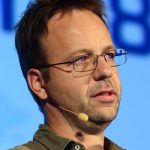



Present and Future of Containers [Panel]
Container technology is spreading like wildfire in the software world — possibly faster than any other technology before. But what are the key learnings so far? Have the initial assumptions about the way in which containers revolutionize both the development and deployment of software been verified or falsified? What are the key learnings from containers in production? Let’s discuss with a few container experts.
John Willis Docker Inc.
John Willis has worked in the IT management industry for more than 35 years. Currently he is an Evangelist at Docker Inc. Prior to Docker Willis was the VP of Solutions for Socketplane (sold to Docker) and Enstratius (sold to Dell). Prior to to Socketplane and Enstratius Willis was the VP of Training & Services at Opscode where he formalized the training, evangelism, and professional services functions at the firm. Willis also founded Gulf Breeze Software, an award winning IBM business partner, which specializes in deploying Tivoli technology for the enterprise. Willis has authored six IBM Redbooks for IBM on enterprise systems management and was the founder and chief architect at Chain Bridge Systems.
Dr. Roland Huß Red Hat
Roland Huß is a Principal Software Engineer at Red Hat working on fabric8. He has been developing in Java for nineteen years now but never forgot his roots as system administrator.
Roland is an active open source contributor, lead developer of the
JMX-HTTP bridge Jolokia and the popular fabric8io/docker-maven-plugin. And he loves chilli pepper.
Sebastian Meyen Software & Support Media GmbH
Sebastian Meyen is Chief Content Officer at S&S Media. He has been actively involved with the IT industry for more than ten years. As a journalist he is constantly in touch with thought leaders in software development and architecture. He is editor in chief of the German speaking Java Magazin and program chair of the JAX conferences since 2001. Prior to joining S&S Media, he studied philosophy and anthropology in Frankfurt, Germany.
Peter Roßbach bee42 solutions gmbh
Peter Roßbach ist freiberuflicher Systemarchitekt und Coach zahlreicher Webanwendungen. Sein besonderes Interesse gilt der Entwicklung von komplexen Informationssystemen, einschließlich der Gestaltung und Realisierung von testgetriebenen Prozessen. Seit 1997 ist Peter Roßbach im Bereich HTTP-Server und Webcontainer tätig. Er ist Committer im Apache-Tomcat-Projekt und Mitglied der Apache Software Foundation. Sein besonderes Interesse gilt der Gestaltung von Provisionierungs-, Überwachungs- und Analysesystemen für komplexe Infrastrukturen. Mit der bee42 solutions gmbh realisiert er entsprechende Infrastrukturprodukte und Dienstleitungen auf Basis des Docker-Ökosystems, aktueller Webtechnologien, NoSQL-Datenbanken und Cloud-Plattformen.
Philipp Garbe AutoScout24
Philipp Garbe works as Lead Software Developer at AutoScout24 in Munich. Since more than six years he’s working with web technologies and at the moment he’s part of “Tatsu”, the project that transforms the matured AutoScout24 IT setup into a nextgen Web-Scale IT platform. As Docker Captain he also tries to share his knowledge and experience about containers. Philipp is driven by technologies and tools that allows him to release faster and more often. He expects that every commit automatically goes into production and it shouldn’t surprise that he’s excited about microservices, docker and the Cloud. Affected by Pain-driven Development, he believes that things needs to be changed whenever the pain is big enough.
10:15 - 11:15
Asam II

Docker in the non-containerized World
Um das Potenzial agiler Softwareentwicklung voll ausschöpfen zu können, sind neue und vor allem schnellere Methoden der Anwendungsauslieferung nötig. Diese Methoden müssen jedoch auch mit der vorhandenen Infrastruktur integrierbar sein. In diesem Vortrag erfahren Sie, wie Sie Docker mit der „Non-containerized“ Welt verbinden, d. h. verlinken von Applikationen innerhalb und außerhalb von Containern, um einen ganzheitlichen Automatisierungsprozess zu erreichen. Lernen Sie, wie Sie Continuous Delivery selbst für komplexe Applikationen erreichen können. Entdecken Sie die Vorteile einer Einbindung von Docker in den gesamten Bereitstellungs- und Deployment-Prozess, um Transparenz und Übersicht über alle Aktivitäten hinweg zu schaffen.
Stefan Kures Automic
Stefan Kures ist seit knapp fünfzehn Jahren in der IT tätig, wobei seine Wurzeln im Ops-Bereich liegen. Allerdings ergaben sich im Laufe seiner Karriere auch wichtige Stationen in Dev-Abteilungen. Als Fan von Automatisierung gibt es Wörter wie „manuell“ nicht mehr in seinem Vokabular. In der Vergangenheit konnte er in internationalen Projekten, im Kontext von DevOps, Continuous Delivery/Deployment, Full Stack Provisioning oder Scheduling, den maximalen Nutzen einer ganzheitlichen Automatisierung erzielen. Neue Technologien und neue Markttrends sind seine Hobbies und bieten somit die optimale Grundlage für den europaweiten Aufgabenbereich bei der Firma Automic.
10:15 - 11:15
Cuvillies

Listen to your Infrastructure
You can log everything, but if you are offline when a problem appears, your system will be down. The ugly truth is, you are not a 24h parser for your logs. Luckily there are a lot of tools that can help you to resolve this problem: Slack, IRC, email or a real slap. It is not important what you will use but remember this concept. During this talk we will learn how to build a monitoring system based on InfluxDB, a popular time series database and how close the circle with a notification trigger if the system detects an anomaly.
Gianluca Arbezzano CurrencyFair
Gianluca Arbezzano is Software Engineer at CurrencyFair, a tech financial company. He works on different layer like automation, scalability and distributed system. He also is Open Source contributor and Docker Captain, strong believer in best developing practices and supporter of different User Groups.
His fields of interest are various and constantly in evolution: in the last year, he worked a lot on scalable infrastructures, reaching the goal of building some of them on top of AWS, DigitalOcean and OpenStack.
10:15 - 11:15
Effner

DevOps Kaizen: Empowering Teams to find and fix their own Problems
We all love the aspirational DevOps talks about companies achieving blistering speed and dazzling nimbleness. But improving your own organization’s performance – from where they are now to performance levels equal to the industry leaders – seems like a very long and difficult road. What is missing in most organizations? A repeatable system that empowers teams to find and fix their own problems. This is a prescriptive talk about empowering and transforming organizations using a methodical — and totally reasonable – Kaizen (Continuous Improvement) approach. We’ll look at ways of combining known techniques like value stream mapping, Lean waste analysis, and improvement kata in order to fix organizational, process, and tooling problems. This talk isn’t about mythical silver bullets or vague philosophies. This talk is about taking a fresh look at proven Lean techniques that already work in high-performing IT organizations.
Damon Edwards SimplifyOps
Damon Edwards is a Co-Founder and Chief Product Officer of SimplifyOps, the makers of the popular job scheduling and runbook automation tool, Rundeck. Damon Edwards was a co-founder of DTO Solutions, a DevOps and IT Operations improvement consultancy. Damon has spent over 15 years working with both the technology and business ends of IT operations and is noted for being a leader in porting cutting-edge DevOps techniques to large enterprise organizations. Damon is also a frequent conference speaker and writer who focuses on DevOps and operations improvement topics. Damon is active in the international DevOps community, including being a co-host of the DevOps Cafe podcast, an early core organizer of the DevOps Days conference series, and a content chair for Gene Kim’s DevOps Enterprise Summit.
10:15 - 11:15
Asam I
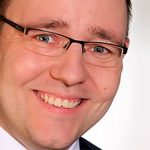
Wie smarte Storage-Architekturen Ihre DevOps Umgebungen optimieren können
Storage-Systeme können mehr sein als Geräte, auf denen wir Daten ablegen. Intelligente und flexible Storage-Systeme können Ihnen dabei helfen, Ihre Entwicklungsprozesse zu verbessern oder Testszenarien zu beschleunigen. In dieser Session werden Sie erfahren, wie Sie mit SolidFire Ihre DevOps-Umgebungen optimieren können.
Christian Arkadius Keil NetApp
Christian Arkadius Keil ist als Senior Systems Engineer bei NetApp tätig und forciert auf das Produkt SolidFire. Er berät in dieser Funktion IT-Verantwortliche und -Professionals. Schwerpunkte bilden dabei die Planung und der Aufbau neuer sowie die Optimierung und Konsolidierung bestehender IT- und Speicherlandschaften, wobei Virtualisierung stets der Dreh- und Angelpunkt ist. Dabei beachtet er stets die Verzahnung von IT- und Geschäftsnutzen durch die optimale Integration von Cloud- und Flash-Technologien in den virtualisierten Umgebungen. Durch seine langjährige Expertise in diesem Umfeld verhilft Christian Arkadius Keil IT-Abteilungen zu mehr Effizienz und entlastet Budgets und Mitarbeiter.
12:00 - 13:00
Asam II

Windows Server Container and Docker
With Windows Server 2016, Windows learns to speak Docker. In this session, Rainer Stropek, long-time Azure MVP and MS Regional Director, introduces Windows Server Containers. You see how to manage them with PowerShell and the Docker CLI. Additionally, Rainer will demonstrate Dockerfiles with containers on Windows. Note that Rainer assumes for this session that you already have basic knowledge about PowerShell and the Docker CLI.
Rainer Stropek software architects gmbh
Rainer Stropek ist seit über zwanzig Jahren als Unternehmer in der IT-Industrie tätig. Er gründete und führte in dieser Zeit mehrere IT-Dienstleistungsunternehmen und entwickelt im Augenblick in seiner Firma software architects mit seinem Team die preisgekrönte Software time cockpit. Rainer hat Abschlüsse an der Höheren Technischen Schule für MIS, Leonding (AT) sowie der University of Derby (UK). Er ist Autor mehrerer Fachbücher und Artikel in Magazinen im Umfeld von Microsoft .NET und C#. Seine technischen Schwerpunkte sind C# und das .NET Framework, XAML, die Microsoft-Azure-Plattform, SQL Server sowie Web Development. Rainer tritt regelmäßig als Speaker und Trainer auf namhaften Konferenzen in Europa und den USA auf. 2010 wurde Rainer von Microsoft zu einem der ersten MVPs für die Windows-Azure-Plattform ernannt. Seit 2015 ist Rainer auch Microsoft Regional Director.
12:00 - 13:00
Cuvillies

How DevOps propagates through an Organisation
Where does DevOps start? Is it a grassroots movement? Is it bottom-up or top-down or both? Why do we seem to have multiple pockets of DevOps in our organisation? How important is executive support? What does DevOps look like when it’s done? These are questions Helen answers on a daily basis with organisations in various industries and differing sizes all over the globe and probably ones that you’re asking too. In this talk Helen will explore the role of change agents in proliferating DevOps thinking and practices across an organisation and tools and approaches to ensure the right improvements are made, best practice is followed and pivots are successfully undertaken when things don’t go quite as intended.
Helen Beal Ranger4
Helen Beal has twenty years’ experience working in the technology industry with a focus on the Software Development Lifecycle for a wealth of cross industry clients in the UK and abroad. Helen is passionate about DevOps and is the creator of the Ranger4 DevOps LiftOff Workshop and the Ranger4 DevOps Maturity Assessment – winner of the IBM Beacon Award 2015 for Outstanding DevOps Solution. She also started Ranger4’s #DevOpsFriday5 initiative and is on the Board of Regents at the DevOps Institute (Ranger4 are also a Registered Education Provider for the DOI’s DevOps training courses). Helen is also a novelist and ecologist. She once saw a flamingo lay an egg.
12:00 - 13:00
Asam I

Docker opens the Doors for IoT
Using Docker containers to develop, test and run applications is well known for Cloud and datacenter environments. In this talk we’re going to introduce you to the principles and specific requirements of using Docker for IoT use cases. We’re looking into the details how to optimize an application for size and easier deployment on small IoT devices.
Peter Roßbach bee42 solutions gmbh
Peter Roßbach ist freiberuflicher Systemarchitekt und Coach zahlreicher Webanwendungen. Sein besonderes Interesse gilt der Entwicklung von komplexen Informationssystemen, einschließlich der Gestaltung und Realisierung von testgetriebenen Prozessen. Seit 1997 ist Peter Roßbach im Bereich HTTP-Server und Webcontainer tätig. Er ist Committer im Apache-Tomcat-Projekt und Mitglied der Apache Software Foundation. Sein besonderes Interesse gilt der Gestaltung von Provisionierungs-, Überwachungs- und Analysesystemen für komplexe Infrastrukturen. Mit der bee42 solutions gmbh realisiert er entsprechende Infrastrukturprodukte und Dienstleitungen auf Basis des Docker-Ökosystems, aktueller Webtechnologien, NoSQL-Datenbanken und Cloud-Plattformen.
14:15 - 14:45
Cuvillies

Turning Human Capital into High Performance Organizational Capital
In this presentation we are going to look at how human capital, in the form of culture and behavior patterns, can drive high performance organizations. We will break down three areas to better understand an organization’s culture: Safety Culture, Lean Management and Learning Organizations. We will look at over ten years of research, case studies and DevOps survey data to better understand the break down of what is called the grey area of organizational capital. Learning Outcomes: Help attendees have a better understanding of “DevOps Culture” as it breaks down to three primary areas: Safety Culture – Human Factors and Resilience Engineering (looking at works from authors like Dekker, Cook and Woods). Lean Management – Toyota Production Systems and Toyota Kata ( looking at works from authors like Rother, Spears and Womack). Learning Organizations – Continuous Transformation and Kaizen ( looking at works from authors like Senge and Deming).
John Willis Docker Inc.
John Willis has worked in the IT management industry for more than 35 years. Currently he is an Evangelist at Docker Inc. Prior to Docker Willis was the VP of Solutions for Socketplane (sold to Docker) and Enstratius (sold to Dell). Prior to to Socketplane and Enstratius Willis was the VP of Training & Services at Opscode where he formalized the training, evangelism, and professional services functions at the firm. Willis also founded Gulf Breeze Software, an award winning IBM business partner, which specializes in deploying Tivoli technology for the enterprise. Willis has authored six IBM Redbooks for IBM on enterprise systems management and was the founder and chief architect at Chain Bridge Systems.
15:00 - 16:00
Effner

Application Monitoring with Application Insights
Application Insights promises application monitoring as a service without you having to write code for it or setting up servers. Sounds too good to be true? In this session, Rainer Stropek, long-time Azure MVP and MS Regional Director, introduces Application Insights based on a series of live demos. Rainer starts with the basics and works his way up to advanced features like analytics and custom dashboards with Power BI.
Rainer Stropek software architects gmbh
Rainer Stropek ist seit über zwanzig Jahren als Unternehmer in der IT-Industrie tätig. Er gründete und führte in dieser Zeit mehrere IT-Dienstleistungsunternehmen und entwickelt im Augenblick in seiner Firma software architects mit seinem Team die preisgekrönte Software time cockpit. Rainer hat Abschlüsse an der Höheren Technischen Schule für MIS, Leonding (AT) sowie der University of Derby (UK). Er ist Autor mehrerer Fachbücher und Artikel in Magazinen im Umfeld von Microsoft .NET und C#. Seine technischen Schwerpunkte sind C# und das .NET Framework, XAML, die Microsoft-Azure-Plattform, SQL Server sowie Web Development. Rainer tritt regelmäßig als Speaker und Trainer auf namhaften Konferenzen in Europa und den USA auf. 2010 wurde Rainer von Microsoft zu einem der ersten MVPs für die Windows-Azure-Plattform ernannt. Seit 2015 ist Rainer auch Microsoft Regional Director.
15:00 - 16:00
Asam I

The Missing Link: automated external Vendor Package Processing and computable Release Notes
This talk addresses companies coping with external software suppliers who send releases as archives (tgz, zip, etc other formats) holding deployables which need to be customized (app-config-management) and deployed by internal departments ACM/PCM or DevOps. This initial step is hard to automate because it needs an generic approach which has to be agreed by vendor and customer. I present a real world example developed in Zurich Switzerland in a Private Bank by our company. This solution allows a full End-To-End integration and Continuous Delivery of external supplier packages.
Michael Roepke DerSalvador GmbH
Michael Roepke develops object-functional software for over 25 years and had his own company (Filekeys) in Brasil from 2005 to 2008. Since January 2015 he consults as DevOps in Private Banks in Switzerland. In 2016 he forked
DerSalvador GmbH in Zug for Consulting in DevOps in Switzerland and Brasil.
15:00 - 16:00
Asam II

Hands-on Docker-Security
Dieser Hands-on-Vortrag wird zum größten Teil auf dem Terminal bestritten. Behandelt werden Capabilities, Seccomp, AppArmor, SELinux, Cgroups sowie User-Namespaces und damit auch Bausteine, aus denen (Docker-)Container gebaut werden, welche zur Absicherung der Container verwendet werden, sowie Bausteine, welche auch jenseits von Containern von Operations verwendet werden sollten. Bei diesem Hands-on lernt und sieht der Zuhörer, wie mit Linux-Bordmitteln (Docker-)Applikationen und
Services abgesichert werden.
Erkan Yanar Freelancer
Erkan Yanar beschäftigt sich seit dem letzten Jahrtausend mit Linux. Er ist freiberuflicher Consultant mit den Schwerpunkten MySQL, Containervirtualisierung, DevOps und OpenStack. Wenn er nicht bei einem Kunden ist, veröffentlicht er in Fachzeitschriften oder hält Vorträge auf Konferenzen.
15:00 - 16:00
Cuvillies

Wie Cloud-Technologien das Unternehmen verändern
cosee wurde als Firma mit sehr klassischen Strukturen gegründet. Technologisch setzten wir am Anfang sehr stark auf Enterprise-Technologien. Beide Schuhe passten uns nicht, und wir sind daran fast gescheitert. Wir haben unsere Technologien verändert und sind mit unserer Software in die Cloud gewandert. Gleichzeitig änderte sich unsere Unternehmensstruktur hin zu Agilität und Selbstorganisation. Ein Erfahrungsbericht über die Verknüpfung zwischen Technologien und Arbeitsweisen.
Konstantin Diener cosee GmbH
Konstantin Diener ist CTO bei cosee. Sein aktueller Interessenschwerpunkt liegt auf selbstorganisierten Teams, agiler Unternehmensführung, Management 3.0 und agiler Produktentwicklung. Daneben entwickelt er noch leidenschaftlich gerne selbst Software.
16:30 - 17:30
Cuvillies

Serverless Architecture – Highly scalable Applications without any Servers
For a long time, application server based multi-tier architectures were the backbone of scalable infrastructure. With this architectural pattern it was easy to isolate a component from others. This massively increased the scalability of an application. These days a much simpler pattern called “serverless architecture” becomes more and more popular. In this talk I’ll show how highly scalable application without servers can be build using Amazon API Gateway, AWS Lambda, Amazon S3, and Amazon DynamoDB. Additionally, we will take a look at the Serverless-framework, a command line tool, providing scaffolding, workflow automation and best practices for developing and deploying your serverless architecture.
Sascha Möllering Amazon Web Services Germany GmbH
Sascha Möllering works as Solutions Architect at Amazon Web Services. He’s interested in automation, infrastructure as code, distributed computing, containers and JVM.
16:30 - 17:30
Asam II

Highway to Heaven - Building Microservices in the Cloud
Fed up with stop and go in your data center? Why not shift into overdrive and pull into the fast lane? Learn how AutoScout24, the the largest online car marketplace Europe-wide, are building their Autobahn.
Reinventing themselves by making a radical transition from monoliths to microservices, from .NET on Windows to Scala on Linux, from datacenter to AWS and from built by devs and run by ops to a devops mindset. While the current stack keeps running, ever more microservices will go live as you listen to stories from the trenches. Key takeaways from this talk include: How to ... become cloud native … evolve the architecture … create “you build it you run it” teams … align with principles.
Christian Deger AutoScout24 GmbH
Christian Deger is an architect at AutoScout24. He is deeply involved with "Tatsu", the project that transforms the matured AutoScout24 IT setup into a nextgen Web-Scale IT platform. He joined AutoScout24 as a developer, later led a team of developers, before the current challenges lured him into his technical role. After many years of software development, Christian is still excited about advances in technology and new ideas and concepts. His current vision is centered around "You build it, you run it" and includes buzzwords like AWS, Microservices and Event Sourcing.
He now believes he is an architect, so don't take him too seriously.
16:30 - 17:30
Effner

The API Lifecycle: Best Practices for the Creation and Continuous Integration/Delivery of secured Web APIs
API Management removes the burden of securing, governing, and engaging API consumers from developers of microservices and traditional applications. This session explores ways to redefine the layers to securely connect microservice APIs or any APIs with your digital eco-system. You will learn how to secure your API, engage with consumers and measure API performance. Finally, we take a look at Continuous Integration and delivery of your API security/engagement/visibility layer and explore lightning fast API creation: Create a model in MongoDB and REST APIs within a few clicks, compose, connect.
Philipp Schöne Axway
Philipp Schöne is product manager at Axway for the Axway API management product. He works closely with customers to help them adopt an API first approach to their integration strategies as they extend the boundaries of their enterprise to incorporate new cloud and mobile channels. With a strong background in API management, architecture and SOA security he also advises Axway partners and customers on their Cloud integration, API and identity management capabilities in order to advance the development of the Axway API Solutions. Schöne was previously a member of the Cloud team at Axway consulting and servicing customers where they developed new services for the Axway Cloud Platform. Prior to joining Axway, he worked for a multinational manufacturing company as a global IT project manager.
09:00 - 17:00
Westin/Raum: München
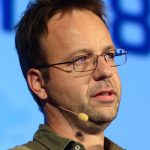



Docker Experts Workshop: Rethink IT with Containers
This workshop is a perfect fit for Docker experts; it offers attendees the opportunity to raise questions and problems regarding Docker technologies. The concept of the workshop is open space to leave room for debates about how to solve the problems that go hand in hand with this new technology. The goal of this workshop is to allow attendees to interact with one another and learn from each other – all under the guidance of an experienced moderator. What technical challenges emerge? Have we reaped the benefits of the existing solutions? What experience values do we already have regarding Docker in production? These are some of the questions that will be addressed in the Docker expert workshop. Attendees are required to have basic Docker knowledge.
PLEASE NOTE/BITTE BEACHTEN:
The Workshops on Thursday will take place in the Westin Grand Munich - next to the Sheraton.
Die Workshops am Donnerstag finden im Westin Grand München gleich gegenüber vom Sheraton statt.
Dr. Roland Huß Red Hat
Roland Huß is a Principal Software Engineer at Red Hat working on fabric8. He has been developing in Java for nineteen years now but never forgot his roots as system administrator.
Roland is an active open source contributor, lead developer of the
JMX-HTTP bridge Jolokia and the popular fabric8io/docker-maven-plugin. And he loves chilli pepper.
Niclas Mietz bee42 solutions gmbh
Niclas Mietz ist DevOps-Engineer mit Leidenschaft in der bee42 solutions gmbh und studiert Informatik an der FH in Dortmund. Er beschäftigt sich gerne mit Open-Source-Projekten des Docker-Ökosystems und liebt es, Automatisierung voranzutreiben. Zudem ist Er auch Co-Organisator des Docker Bochum Meetups.
Peter Roßbach bee42 solutions gmbh
Peter Roßbach ist freiberuflicher Systemarchitekt und Coach zahlreicher Webanwendungen. Sein besonderes Interesse gilt der Entwicklung von komplexen Informationssystemen, einschließlich der Gestaltung und Realisierung von testgetriebenen Prozessen. Seit 1997 ist Peter Roßbach im Bereich HTTP-Server und Webcontainer tätig. Er ist Committer im Apache-Tomcat-Projekt und Mitglied der Apache Software Foundation. Sein besonderes Interesse gilt der Gestaltung von Provisionierungs-, Überwachungs- und Analysesystemen für komplexe Infrastrukturen. Mit der bee42 solutions gmbh realisiert er entsprechende Infrastrukturprodukte und Dienstleitungen auf Basis des Docker-Ökosystems, aktueller Webtechnologien, NoSQL-Datenbanken und Cloud-Plattformen.
Erkan Yanar Freelancer
Erkan Yanar beschäftigt sich seit dem letzten Jahrtausend mit Linux. Er ist freiberuflicher Consultant mit den Schwerpunkten MySQL, Containervirtualisierung, DevOps und OpenStack. Wenn er nicht bei einem Kunden ist, veröffentlicht er in Fachzeitschriften oder hält Vorträge auf Konferenzen.
09:00 - 17:00
Westin/Raum: Partenkirchen


Transformations-Workshop: Handwerkszeug des Architekten der Zukunft
Auf Basis der Case Study LiftUp aus unserem Buch „Business Enterprise Architecture“ entwickeln wir einen Masterplan für die Transformation sowie ein entsprechend bewertetes Transformation-Portfolio. Neue Technologien sind ein wesentlicher Enabler für die Veränderungen. Diese stehen in diesem WS aber nicht im Fokus, sondern die Veränderungen im Unternehmen, um die neuen Technologien für den Geschäftserfolg nutzbar zu machen. An Beispielen werden die Teilnehmer die Werkzeuge des Buchs praktisch anzuwenden lernen und unter anderem ein neues Business-Model, Operating-Model und eine Zielarchitektur entwickeln. Außerdem werden wir ausführlich darüber diskutieren, wie eine Transformation strukturiert und durchgeführt werden kann. Der Workshop wird interaktiv und mit vielen Diskussionen und Übungen gestaltet werden. Die jeweiligen Aspekte werden in kleinen Gruppen erarbeitet und im Plenum mit allen Teilnehmern stetig abgestimmt, sodass am Ende ein ganzheitlicher Entwurf der umsetzbaren Transformation entsteht. Bringen Sie Kreativität und gute Laune mit.
PLEASE NOTE/BITTE BEACHTEN:
The Workshops on Thursday will take place in the Westin Grand Munich - next to the Sheraton.
Die Workshops am Donnerstag finden im Westin Grand München gleich gegenüber vom Sheraton statt.
Carsten Sensler ArtOfArc
Carsten Sensler berät Kunden im Kontext ihrer Transformation in den verschiedensten Dimensionen und Ausprägungen. Vor dieser Zeit war Carsten bis Ende 2013 Angestellter eines großen Telekommunikationskonzerns. Dort war er als Vice President „Technology, Architecture and Operation“ Mitgründer eines strategischen Konzerngeschäftsfelds. Vorher arbeitete er in dem Konzern als Group-Enterprise-Architekt für den CIO. Carsten war für die Ausgestaltung der Konzernzielarchitektur und deren internationalem Alignment verantwortlich sowie zuvor innerhalb der Enterprise-Integration für die konzernweite Standardisierung einer SOA-Infrastruktur sowie der entsprechenden SOA Governance. Seine Karriere begann er als Consultant für neue Technologien. Neben seinen beruflichen Herausforderungen konnte Carsten an der Henley Business School (UK) erfolgreich den Masterstudiengang in „Enterprise Information Management“ absolvieren. Carsten teilt sehr gerne sein Wissen und seine Erfahrungen mit anderen, indem er Fachartikel veröffentlicht, auf Konferenzen referiert oder als Gastdozent Lehrveranstaltungen gibt.
Dr. Thomas Grimm ArtOfArc
Dr. Thomas Grimm berät seine Kunden bei der Ausgestaltung ihrer Transformation in den unterschiedlichen Dimensionen. Er ist promovierter Physiker und hat in den 1990er-Jahren in Frankfurt, Göttingen und Los Angeles studiert. Kurz vor der Jahrtausendwende wechselte er als Berater für neue Softwaretechnologien und moderne Architekturen in die Industrie. Mitte 2004 übernahm er bei einem großen Telekommunikationsanbieter die Verantwortung für die Integrationsstrategie und -plattform SOA. Später zeichnete er als Group-Enterprise-Architekt für die Entwicklung der Konzernzielarchitektur und deren internationales Alignment verantwortlich. Anfang 2013 übernahm er in einem neuen Geschäftsfeld für Fort- und Weiterbildung die Verantwortung für Strategie und Business Development. Neben seiner beruflichen Tätigkeit hat Thomas einen Masterstudiengang „Enterprise Information Management“ an der Henley Business School (UK) erfolgreich abgeschlossen. Weiterhin betätigt er sich gerne als Autor von Fachartikeln und Büchern, Sprecher auf Konferenzen und als Gastdozent.
GET DEVOPS NEWS AND UPDATES!
Join our community and stay up to date!
GET DEVOPS NEWS AND UPDATES!
Join our community and stay up to date!
GET DEVOPS NEWS AND UPDATES!
Join our community and stay up to date!
Unlock Exclusive Discounts & Free Recordings Today
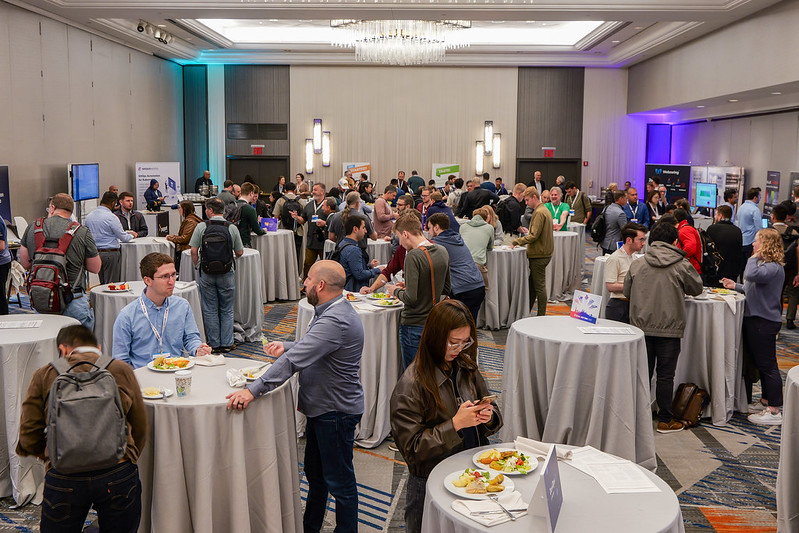
Register for a free devmio Fullstack membership to secure:
 6 months access to session recordings.
6 months access to session recordings.
 $100 discounts on DevOpsCon New York tickets.
$100 discounts on DevOpsCon New York tickets.
 1 year unlimited access to devmio - the conference platform.
1 year unlimited access to devmio - the conference platform.
Sign Up today and get a taste of DevOpsCon New York! Free for a limited time.
GET DEVOPS NEWS AND UPDATES!
Join our community and stay up to date!
GET DEVOPS NEWS AND UPDATES!
Join our community and stay up to date!
Hoi Amsterdam - We Are Coming Soon!
Join Our Community to stay ahead with the latest trends, whitepapers, webinars and Early Bird Offers.
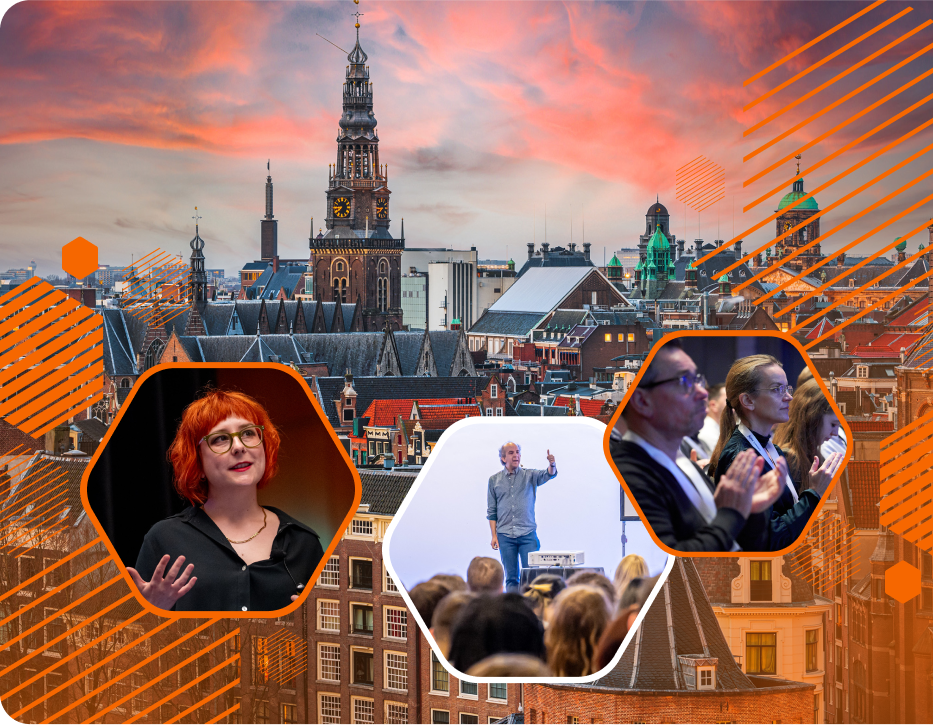
GET DEVOPS NEWS AND UPDATES!
Join our community and stay up to date!